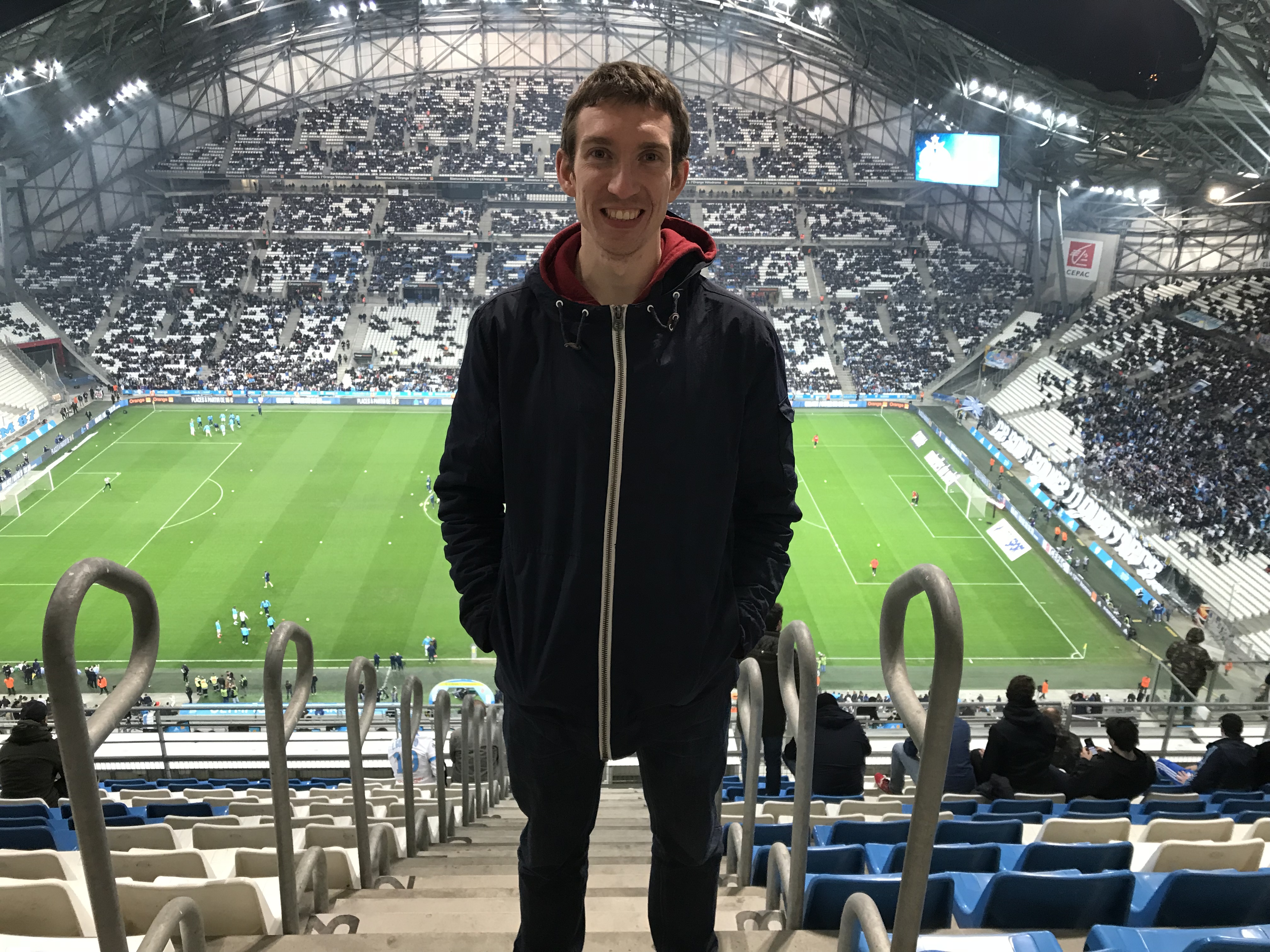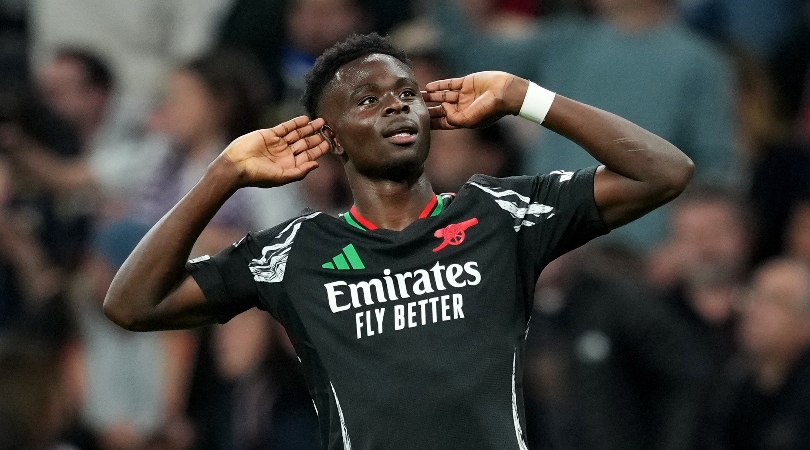FourFourTwo's 50 Best Football Managers in the World 2015: No.5
He wasn't a popular replacement for Antonio Conte, but if anything Allegri has made Juventus even better
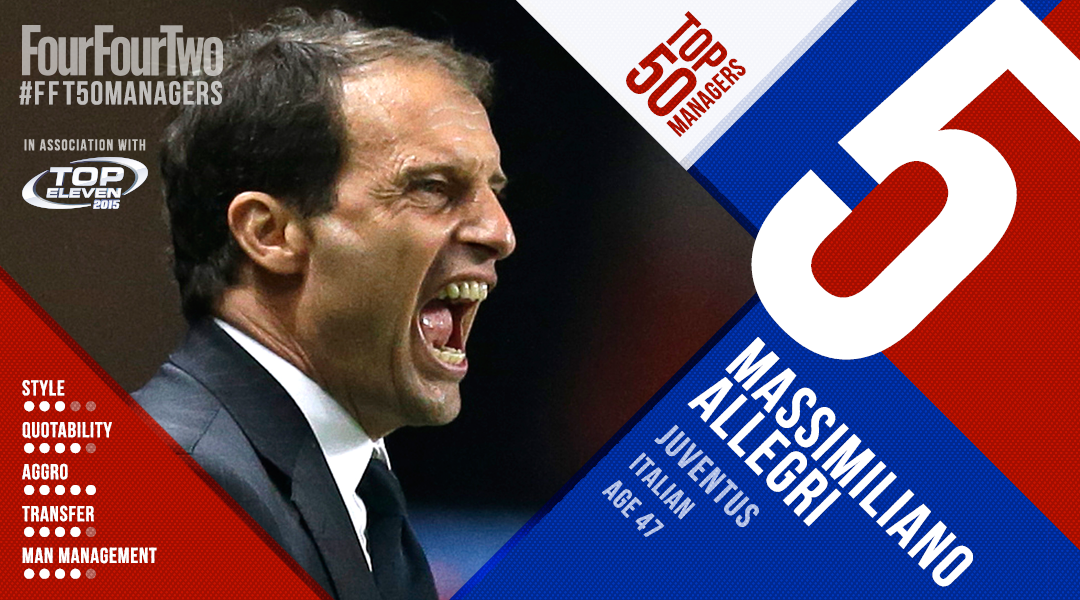
Last summer, Max Allegri was greeted with thrown eggs and loud jeers as he was appointed Antonio Conte’s successor as manager of Juventus. This spring, he ended his first season in Turin with a domestic double and Champions League runners-up medal.
It’s been some turnaround. Conte’s shock resignation on the eve of pre-season appeared to have thrown Juve into turmoil, with many predicting the end of the Bianconeri’s recent dominance of Italian football: not only had the league’s leading light lost its most important component, they had replaced the three-time scudetto winner with a man whose last job ended with defeat to minnows Sassuolo and left the mighty Milan languishing in 11th, just six points above the drop zone.
Up the ladder
In truth, the widespread criticism of Allegri was always unfair. The former midfielder has been largely successful in most of the managerial posts he’s held, beginning with his first job at fourth-tier outfit Aglianese, whom he saved from relegation in 2004.
A disappointing stint at Grosseto followed, before Allegri was banned for three months by the Italian FA for taking a coaching post at Udinese while still being contracted to the Biancazzurri.
The then-40-year-old soon bounced back at Sassuolo, though: appointed in August 2007, Allegri guided the club from the Emilia-Romagna level of northern Italy to Serie B for the first time in their history, an accomplishment that was enough to land him his first top-flight job with Cagliari eight months later.
The Sardinians were tipped for relegation at the start of the following season, but Allegri instead led them to a top-half finish, an achievement that was enough to land him the manager of the year prize ahead of Jose Mourinho, who'd won the league with Inter.
Get FourFourTwo Newsletter
The best features, fun and footballing quizzes, straight to your inbox every week.
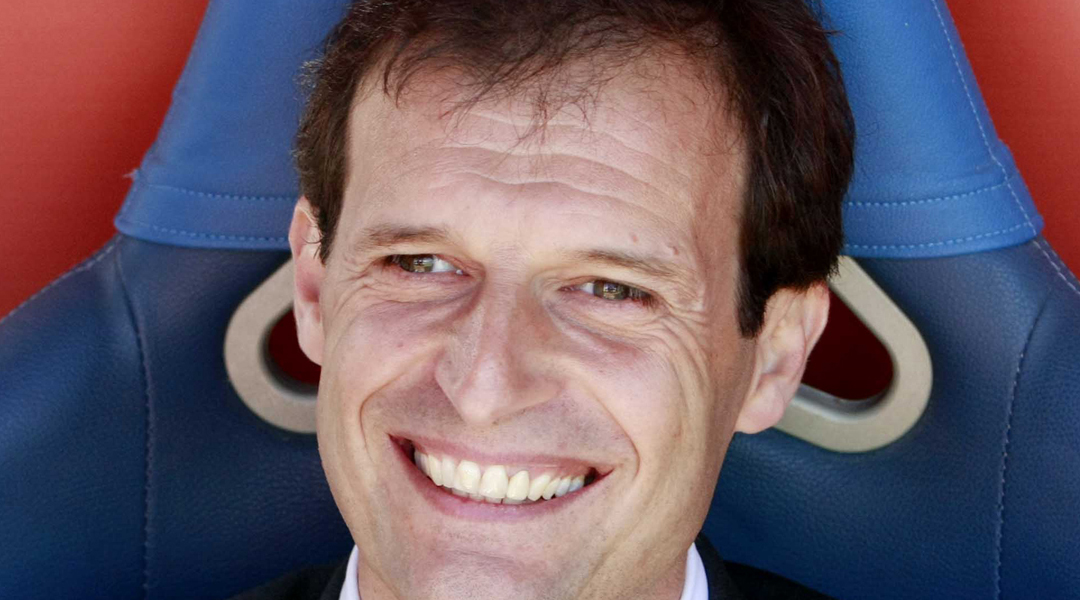
Moreover, notwithstanding the difficulties he experienced in his final campaign in charge, Allegri did a good job at Milan overall: winning the San Siro side’s first scudetto in seven years in 2011, then somehow qualifying for the Champions League in 2013 after a summer fire sale had seen the likes of Thiago Silva and Zlatan Ibrahimovic depart. Bearing in mind their current woes, that’s nothing to be sniffed at.
Another level
Despite those impressive feats, last season was undoubtedly the best in the 47-year-old’s managerial career so far. With Roma and Inter strengthening last summer and Rafael Benitez’s Napoli expected to fight for the title in the Spaniard’s second campaign at the helm, it was anticipated that Juventus would face a real battle to retain their championship crown.
As it transpired, Allegri guided the Old Lady to one of their more comfortable triumphs, finishing 17 points above runners-up Roma and wrapping up a fourth straight title with four games to spare.
Success in Serie A, though, was hardly treading new ground. Conte’s Juventus were already undisputed kings of Italy, meaning that Allegri had merely matched the attainments of his predecessor by topping the table at the end of May.
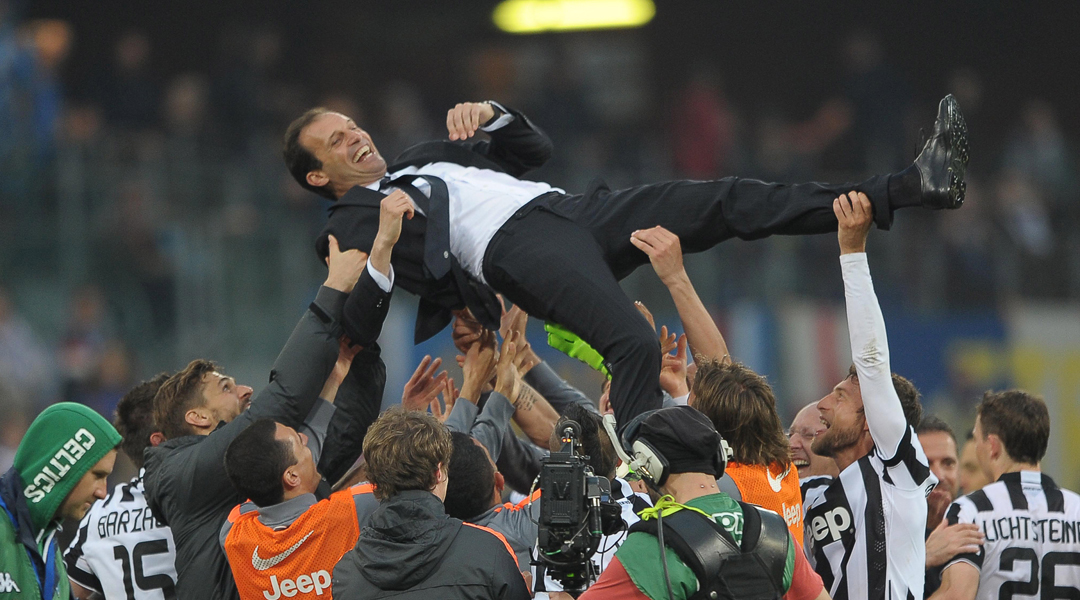
Indeed, it was Juve’s showings in Europe that really set Allegri apart. Conte struggled in the Champions League – the Bianconeri were easily beaten by Bayern Munich in the quarter-finals in 2013 before crashing out in the group stages after dropped points against Copenhagen and Galatasaray a year later. For Juventus to make the next step in their evolution, a run deep into Europe’s primary club competition was required.
It’s exactly what Allegri managed as Juve overcame Borussia Dortmund, Monaco and Real Madrid in the knockout stages to contest the Champions League final with Barcelona. Leading a charge on two fronts requires tactical flexibility, astute planning and game and squad management, attributes that Allegri showcased throughout 2014/15.
Tinkerman
The Italian preached patience and control from the very start of the season, diluting the high-tempo intensity that Conte demanded from the first whistle. Juventus regularly bided their time in matches and carefully selected their moments to strike, but were also capable of hounding opponents and getting the ball forward quickly, as they did in the opening minutes of the semi-final first leg against Madrid.
Allegri’s adaptability also manifested itself in terms of the formation he employed. Conte’s 3-5-2 was initially retained but then gradually gave way to the 4-3-1-2 configuration that Allegri believed was better-suited to European competition. Juventus regularly flitted between the two depending on the opposition or circumstances in front of them, with both set-ups at times used within the same game.
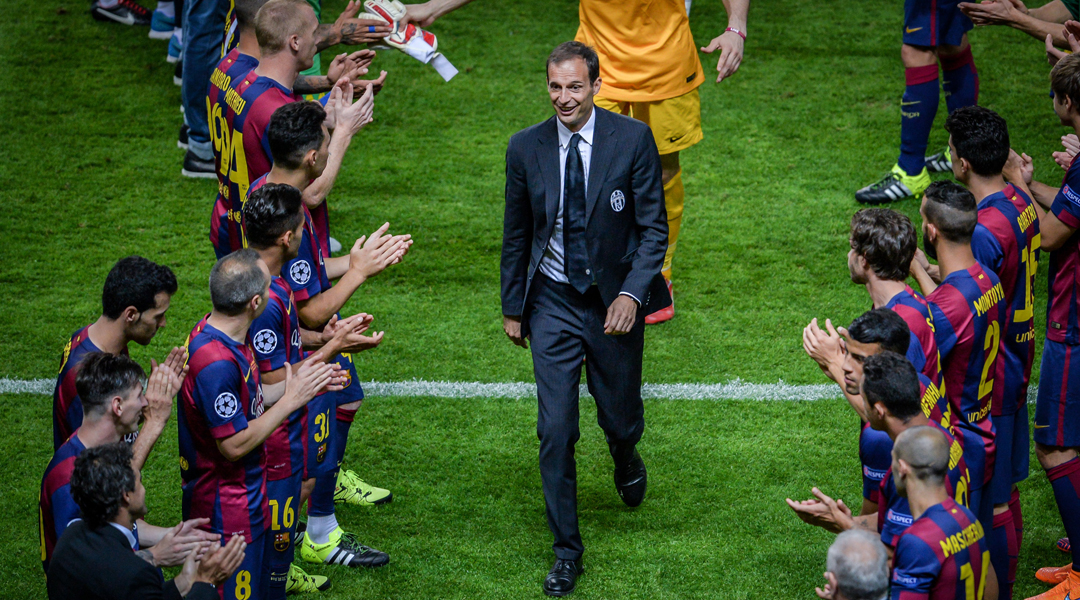
Critics may argue that Allegri inherited a wonderfully gifted squad and that the season’s achievements were thus par for the course, but such a viewpoint would represent a major misunderstanding of how the game works.
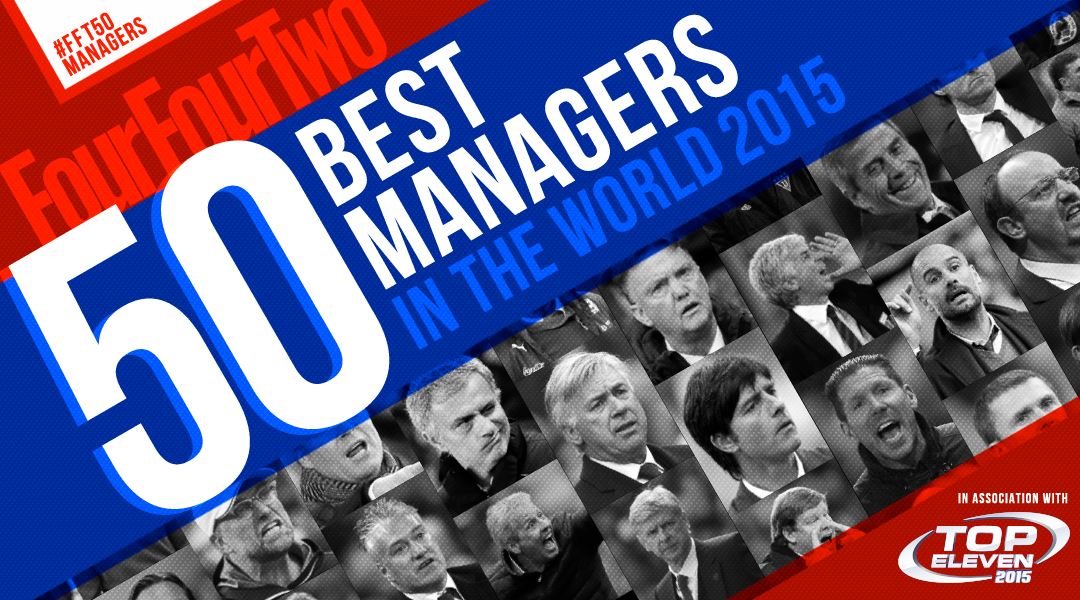
Allegri’s success came in moulding Juve’s individual parts into a cohesive collective unit and producing a team even greater than the sum of its parts. The individual talents of Paul Pogba, Carlos Tevez, Gigi Buffon and Arturo Vidal certainly helped, but Allegri deserves huge credit for guiding Juventus to a league title, Coppa Italia and the Champions League final.
So what of last summer’s egg-throwers, then? Having forcefully discarded their ovoid sources of protein, they’ve been made to eat their words instead.
Tactics corner (by Michael Cox)
"Unveiled to a chorus of sighs from Juventus supporters last year, Max Allegri took Juventus to a domestic double and a Champions League final. Considering he’d previously won Serie A with Milan – in 2011, ending Inter’s domination after five successive titles – it’s slightly peculiar he wasn’t already viewed as a fine manager.
"Allegri’s success with Milan was largely about leaving his most experienced players to it. Milan had an ageing but highly knowledgeable squad, with defenders who knew how to position themselves, midfielders who had been together for years, and Zlatan Ibrahimovic upfront. Milan were unspectacular, usually in a narrow and slow 4-3-1-2 system, but they got the job done.
"Initially, Allegri’s approach at Juventus was as expected: he didn’t change significantly from the approach used by Antonio Conte, persevering with the 3-5-2 system. Then, however, he decided to change course and switched to a four-man defence in conjunction with a diamond midfield – changing Juve’s tactics, but equally importantly, putting his own stamp upon the team.
"An overall football philosophy is difficult to decipher, but individual tactical decisions often work wonders. For example, his instructions for Juve to hit long balls towards Carlos Tevez and Alvaro Morata, therefore bypassing Dortmund’s famous midfield press, worked wonders in a 3-0 win."
FFT's 50 Best Football Managers: 50-46 • 45-41 • 40-36 • 35-31 • 30-26 • 25-21 • 20-16 • 15-11 • 10 • 9 • 8 • 7 • 6 • 5 • 4 • 3 • 2 • 1
#FFT50MANAGERS See our full list of top 50 managers in the world and features on them here
Greg Lea is a freelance football journalist who's filled in wherever FourFourTwo needs him since 2014. He became a Crystal Palace fan after watching a 1-0 loss to Port Vale in 1998, and once got on the scoresheet in a primary school game against Wilfried Zaha's Whitehorse Manor (an own goal in an 8-0 defeat).
